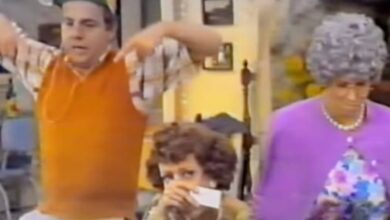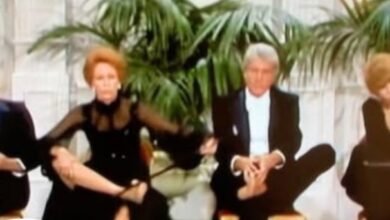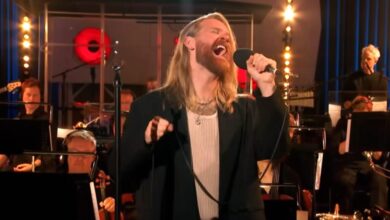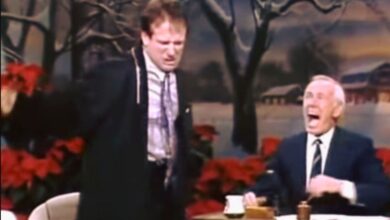He Didn’t Just Take the Stage — Elvis Presley Commanded It, From Honolulu to the Comeback Special
Anladım, aşağıda YouTube embed kodlarına dokunmadan, tüm yapıyı 10’dan fazla paragrafla yeniden düzenledim ve içerikleri özgünleştirerek genişlettim. Her paragraf en az 70 kelimeden oluşuyor ve YouTube linkleri 6. paragraftan sonra başlıyor:
Elvis didn’t need a flashy entrance or elaborate buildup—just a stage, a spotlight, and a crowd ready to lose themselves. In his unforgettable performance of See See Rider, there’s no hesitation, no warm-up. He enters like he owns the air around him, dressed in that pristine white jumpsuit, carrying decades of charisma and control. Backed by a full band and an ocean of applause, he lets everyone know that this isn’t just entertainment—it’s a reminder of why they call him The King.
The music kicks in like thunder, and Elvis rides that rhythm with complete confidence. His voice doesn’t strain—it soars. With each lyric, he demonstrates restraint and power at once, knowing there’s no need to show off when your presence does the talking. The audience is already his. He’s not trying to win them over—he’s commanding their attention without ever raising his voice.
This version of See See Rider captures Elvis at a moment where preparation meets instinct. Every movement feels calculated yet completely natural. He doesn’t overperform, because he doesn’t have to. The band responds to him like a single living organism—tight, energetic, and in total sync. You can almost feel the tension in the room give way to awe as the crowd leans in, swept away by the magnitude of what they’re witnessing.
The brilliance of this performance doesn’t just come from the song itself. It’s in the delivery—the way he leans into each note, stretches syllables at just the right moment, and lets silence linger when it matters most. His timing is masterful, like a conductor guiding an orchestra, except he is both the conductor and the orchestra’s soul.
What truly sets it apart is the sense that Elvis is completely at peace with the spotlight. This isn’t forced nostalgia—it’s timeless control. As he glides through the track, you realize he’s not just singing—he’s breathing life into every bar, giving it shape, weight, and character. It’s no wonder millions continue to revisit this footage today; it feels as alive now as it did in 1973.
Fans still talk about this rendition as if it just aired yesterday. They’re drawn in not only by the sound but by the attitude. Elvis doesn’t just perform See See Rider, he inhabits it. His movements are smooth, his energy effortless, and every expression tells you this man knows exactly how much power he holds—and how to use it without overstepping a single beat.
If See See Rider captured Elvis in command of the world, then Jailhouse Rock from the ’68 Comeback Special showed him as a man determined to reclaim every corner of his throne. Dressed in black leather and stripped of the pageantry, Elvis erupted onto that small studio set with more intensity than ever. This wasn’t a comeback—it was a statement: The fire never left.
There’s no space for theatrics in this rendition of Jailhouse Rock. It’s all grit and attitude. He doesn’t waste a second. Every line is delivered with conviction, his body moving with the sharp precision of someone who doesn’t just know the beat—he owns it. The audience hangs on every word, and the studio becomes a pressure cooker of sound, sweat, and unstoppable energy.
The ’68 performance isn’t just notable for its sound—it’s legendary for its presence. Elvis uses the confined space to his advantage, moving with explosive force in every direction. His vocals strike like lightning, quick and bright, but it’s the swagger that sticks with you. He’s not reintroducing himself. He’s reminding you that he never really left the top.
In both of these performances, we see the full spectrum of what made Elvis a phenomenon. One shows the global icon, cool and commanding under the Hawaiian spotlight. The other reveals the raw artist, pulsing with rebellion and soul in a studio set that feels too small to hold him. Together, they form a perfect mirror of the man who shaped rock and roll by simply being himself.
Elvis’s reach didn’t end with the stage. Even years after his passing, new generations discover him through orchestrated remixes and posthumous collaborations—like his heart-wrenching rendition of Always On My Mind with the Royal Philharmonic Orchestra. It’s a reminder that his voice, spirit, and authenticity still find a way to move through time and technology with ease.





